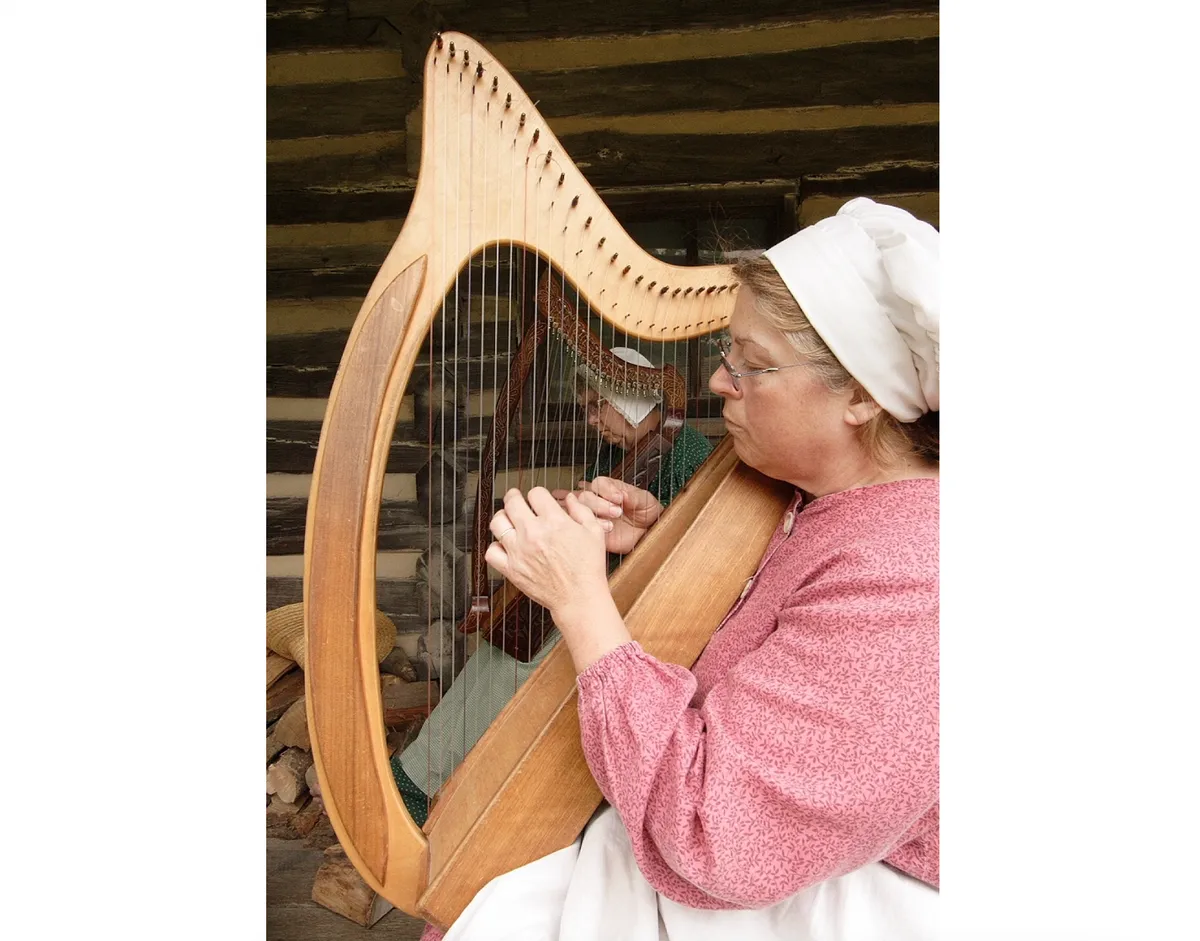Read on for our introduction to one of music's most distinctive and, for many, most beautiful instruments - the 47-stringed, seven-pedalled harp.
Harp definition
The harp is a plucked stringed instrument, which is broadly triangular in shape. Each string produces one note, and the gradation of string length from short to long corresponds to pitch from high to low. The soundboard runs at an almost perpendicular angle to the plane of the strings.
What does a harp look like and how many strings does it have?
The harp comes in many different shape variations and sizes. A modern concert version – used in orchestral music since the 19th century – typically has 47 strings with seven strings per octave, giving a range of six and a half octaves. This type of instrument has seven foot-pedals, which alter the pitches of the strings, so that it can easily play works written in any key.
The longest side of a modern harp is called the column or pillar, which is used to hold up the neck against the tension of the strings. On pedal harps, the pillar is a hollow column and encloses the rods which adjust the pitches.
Strings are often coloured to provide a visual aid when playing. The lowest strings are made from steel and the rest of the strings are typically made from gut.
The modern Celtic or folk harp, which appeared in Ireland in the early 19th century, is far smaller, and arched or bow shaped. It does not have pedals and can be played while resting on the lap. The strings are generally made of wire and are played using the fingernails.

Reenactors playing Celtic harps on the Hill-McNeil Store porch, New Salem, Illinois, 2006
When was the harp invented?
Harps were widely used in the ancient Mediterranean and Middle East, and representations survive from Egypt and Mesopotamia from as far back as 3,000 BCE.
The instrument spread across Europe during the Middle Ages and Renaissance, where it evolved into a wide range of types and variants. It was often depicted in Christian artwork as an instrument played by the angels, and therefore developed a heavenly association.
How is the harp played?
The modern concert version is played while sitting on a stool. The player uses the thumbs and first three fingers of each hand to pluck the strings – the little finger isn’t long enough to be of use.
Chords are very common, played by plucking several strings at once – but must fit within the hand span of the harpist.
What are some of the best-known classical works for harp?
The harp has featured in numerous classical works – in solo, chamber and orchestral settings. Famous works include Mozart’s Concerto for Flute, Harp and Orchestra; Handel’s Concerto for Harp and Orchestra; Donizetti’s harp solo from his opera Lucia di Lammermoor; the cadenza from Tchaikovsky’s ‘Waltz of the Flowers’ from his Nutcracker; and the solo from Debussy’s Prélude à l'après-midi d'un faune.
What is the most expensive harp in the world?
At time of writing, that would be the 'Louis XV' harp, made in fact in 1995 but inspired by French Rococo designs. You can read more about it in our article on the world's most expensive instruments.